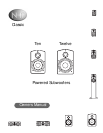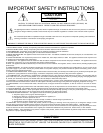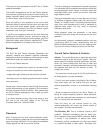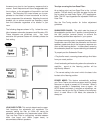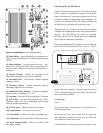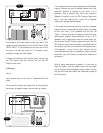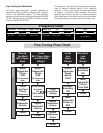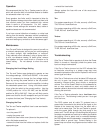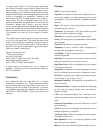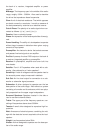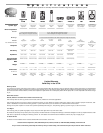• reinstall the fuse holder
Always replace the fuse with one of the exact same
specifications.
Ten:
For systems operating at 115 volts, use only a 5x20 mm,
T3A, 250-volt slow-blow fuse.
For systems operating at 230 volts, use only a 5x20 mm,
T2.0A, 250-volt slow-blow fuse.
Twelve:
For systems operating at 115 volts, use only a 5x20 mm,
T5A, 250-volt slow-blow fuse.
For systems operating at 230 volts, use only a 5x20 mm,
T2.5A, 250-volt slow-blow fuse.
Troubleshooting
If the Ten or Twelve fails to operate at all when the Power
Switch is turned on, thoroughly check the power cord,
input and output connections
If the Ten or Twelve turns on but the LED indicator fails
to illuminate, mis-wiring or a power surge may have
caused the protection fuse to blow. Replace it with one of
correct type and value.
If the Ten or Twelve turns on but its status LED stays red,
the unit is gone into protect mode, which could be
caused by incorrect wiring, short circuits, or excessive
volume. Turn off the Power Switch on the subwoofer for
two or more seconds to reset, and double check all
speaker cables to be sure that no small metal strands are
shorting the terminals.
If the Ten or Twelve subwoofer has a loud hum when
you turn it on. The following is what you can I do to get
rid of the hum;
The DSS system and all cable TV systems have a
ground wire connected to the shield of the signal on the
outside of the house and driven into the earth with a
metal rod or water pipe. The Ten and Twelve is ground-
ed to the power outlet through the third prong of the
power cord. The AC wiring in the building has the ground
conductor connected to a metal rod or water pipe outside
the building. Once a patch cord is connected between
the DSS system and the subwoofer, a complete circuit is
formed called a ground loop. Current flowing in the
ground loop can cause very large amounts of noise in the
system.
Operation
We recommend that the Ten or Twelve power be left on,
which will allow the built-in Auto Mode feature to disable
the subwoofer when not in use.
Every speaker, has limits, and it's important to listen for
them. Speaker damage most often results not from brief
loud musical peaks, but from sustained high volume
levels in some or all frequencies. For this reason,
extreme volume settings and excessive bass, treble or
equalizer boosts are not recommended.
If you hear unusual distortion or breakup, or notice heat
coming from the woofer, decrease volume immediately,
neutralize any excess bass, treble or equalizer boosts,
and avoid setting any controls to similar extremes again.
Maintenance
Your Ten and Twelve is designed for years of use with no
or minimal maintenance, as long as you avoid exposing
it to direct sunlight, high temperatures, or moisture.
Clean cabinets, when necessary, using a damp cloth or
a mild, non-abrasive cleaner; to clean grilles, remove
from speaker and use a soft brush or a vacuum on its
lowest setting. Do not attempt to clean the actual
driver.
Changing the Line Voltage Setting
The Ten and Twelve were designed to operate on two
line voltage settings, 115VAC and 230VAC. In the event
that it is necessary to change the line voltage setting,
begin by turning the power switch to the off position.
Remove all the connections from the amplifier, including
the detachable power cord. Using a flat blade screw-
driver, slide the switch to the correct position. Use the
115VAC position for 110 to 120 VAC, and the 230VAC
position for 220 to 240 VAC. Next you will likely need a
power cord that fits the AC receptacle and you will need
to replace the fuse (see "Changing the Fuse" below)
Changing the Fuse
The Ten and Twelve amplifier's fuse is user-serviceable.
To replace it:
• turn the power OFF
• unplug the power cord
• remove the fuse holder cover (above to the power inlet)
with a flat blade screwdriver
• remove the fuse from the holder and replace it with the
appropriate type.



